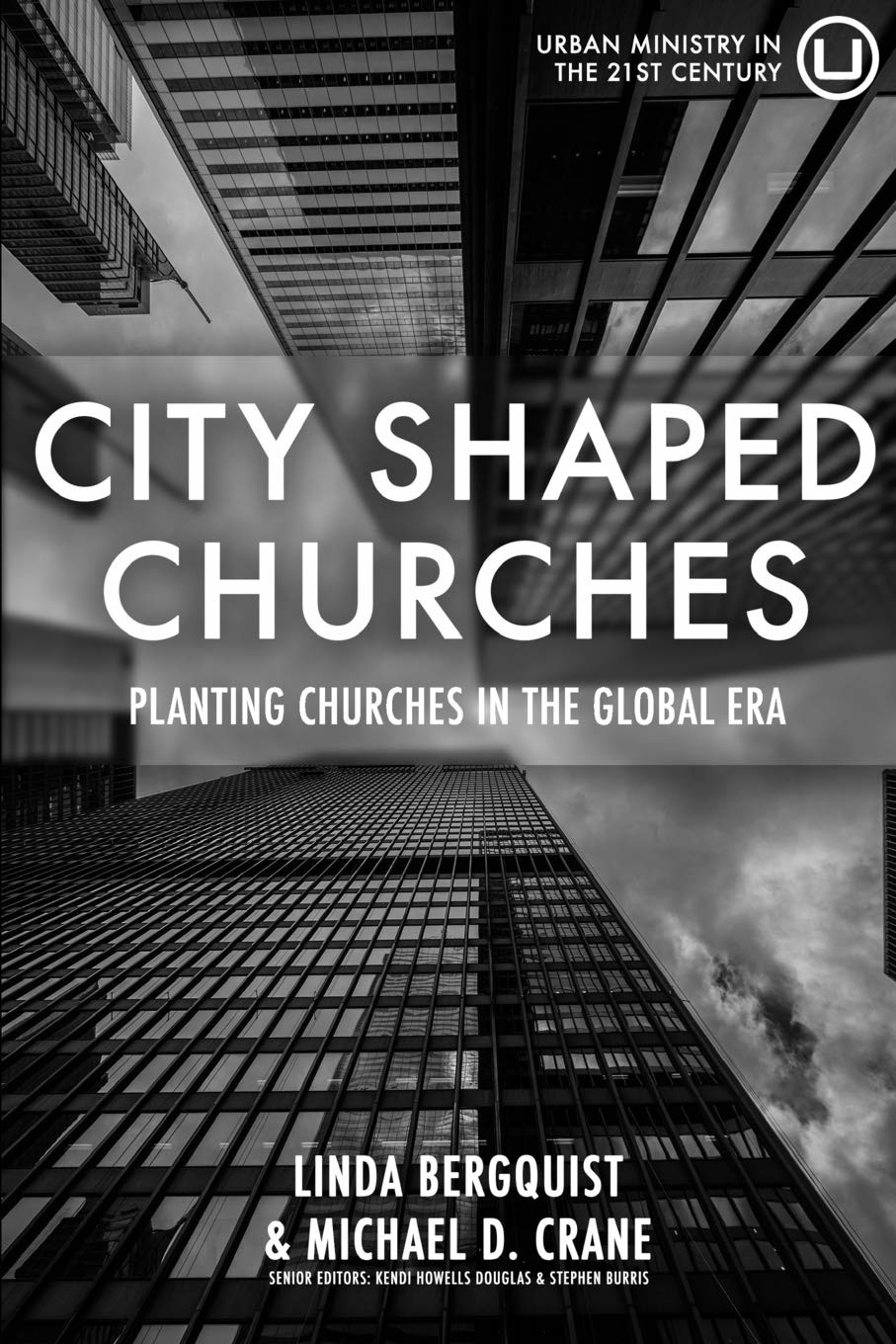
by Linda Bergquist and Michael D. Crane
City Shaped Churches: Planting Churches in the Global Era. Skyforest, CA: Urban Loft Publishers, 2018. 398 pp. £17.06/$21.95.
This review was originally published in Themelios, April 2019.
Linda Bergquist and Michael Crane have teamed up to address challenges to planting churches in urban settings. They speak from broad ministry experience, including working together in a failed church plant in San Francisco in the 1990s (p. 19). They admit their church planting experience “had a steep learning curve” (p. 19). We are reminded that urban church planting is often more challenging and disappointing than people imagine. Their book is a welcome invitation “to become passionate about sharing the gospel in urban centers” (p. 22). The authors’ unique backgrounds contribute to presenting important insights on the challenges of reaching urbanites with the gospel in our global era. They refrain from “insisting on suburban models for urban settings” (p. 27) and provide sociological studies and valuable statistical data on major urban centers.
Crane begins with a theology of the city (ch. 1), acknowledging that “we are not given a prescriptive command to prioritize cities” (p. 47). Yet cities are considered important because they are “economic powerhouses” (p. 51), “centers of cultural production” (p. 52), and “connectors on a global scale” (p. 53). Bergquist identifies four ways church planters relate to the city – “natives, nomads, sojourners, and settlers” (p. 59) – and implications for ministry. She contrasts the concept of reaching low-hanging fruit with reaching those who are hidden in cities (p. 105); these include night workers, undocumented immigrants, the incarcerated, the disabled, and seniors (pp. 108-13). Connecting with these groups requires strategic, creative, and innovative thinking.
Readers will benefit from the emphasis on strategically placed new churches as “points of welcoming urban dwellers [and] pointing them to Christ and the city to come” (p. 45). The authors highlight the need to engage in “demographic and ethnographic research” (p. 100) and the importance of churches seeking “creative ways to open up their buildings in a manner that is inviting to the public” (p. 142). They rightly insist on the priority of the gospel at “the core of every aspect of life. Everything in life is inadequate without being profoundly shaped by the gospel” (p. 241).
Readers will need to evaluate areas of debate. How has sustainability become “a deep moral value to those who care about the future of the planet” (p. 25)? In what way does the Old Testament clearly demonstrate “the church’s responsibility to the alien” (p. 91)? More support is needed for the assertion that the incarnation of Christ “validates and encourages the engagement of the arts in culture” (p. 118). Bergquist proposes novel “multisensory, participatory worship that includes works of art, creative dance, film, photography, and various styles of music” (p. 123). Crane’s claim that “there are almost no nominal Christians in the city” (p. 226) appears unverifiable. The authors conclude their book with two chapters on church planting movements. Bergquist makes several references (ch. 21) to secular social movements (e.g., LGBT, Black Lives Matter) without clearly showing how the success of these movements helps understand church planting movements.
The book’s organization detracts from the reading experience. Its layout with double spacing between paragraphs gives a chopped appearance. The chapters share considerable overlap. At times, the book reads like a patchwork of collected essays. More attention to editing and proofreading would catch inconsistent spacing between sentences and poorly formatted biographical entries. The omission of an index severely limits the ability of church planters to locate areas of particular interest. Mind you, there are many valuable observations, necessary principles, and interesting anecdotes. However, one will need to mine deeply for applicable nuggets due to the global swath of urban centers under discussion. There is not only diversity in cities but among cities. So, moving from global observations to local application might prove challenging.
Frankly, this would not be among the first books I would recommend for those considering urban church planting. The book might be useful as a companion volume to other books specifically focused on particular contexts. It reveals the challenge of multiple authors in different geographical regions to collaborate and produce something cohesive. The authors attempt to cover too much material in twenty-three chapters with little discernable structure. There are better written and more user-friendly books available. These would include Stephen T. Um and Justin Buzzard’s Why Cities Matter: To God, the Culture, and the Church (Wheaton, IL: Crossway, 2013), Ed Stetzer’s Planting Missional Churches (Nashville: B&H Academic, 2006), and Scott Moreau’s Contextualizing the Faith (Grand Rapids: Baker Academic, 2018).
Crane and Bergquist are not novices. They are seasoned church planters sharing their wisdom and burden for cities. We need the reminder that we find in cities the nations of the world gathered in a grand mosaic. We recall that those for whom Christ died come from every tribe, every language, and every people. The diversity of cities and the differences between cities requires study, reflection, wise counsel, and prayer for church planters to determine where to go. If God calls them to minister in the city, they must be aware of the challenges before them.